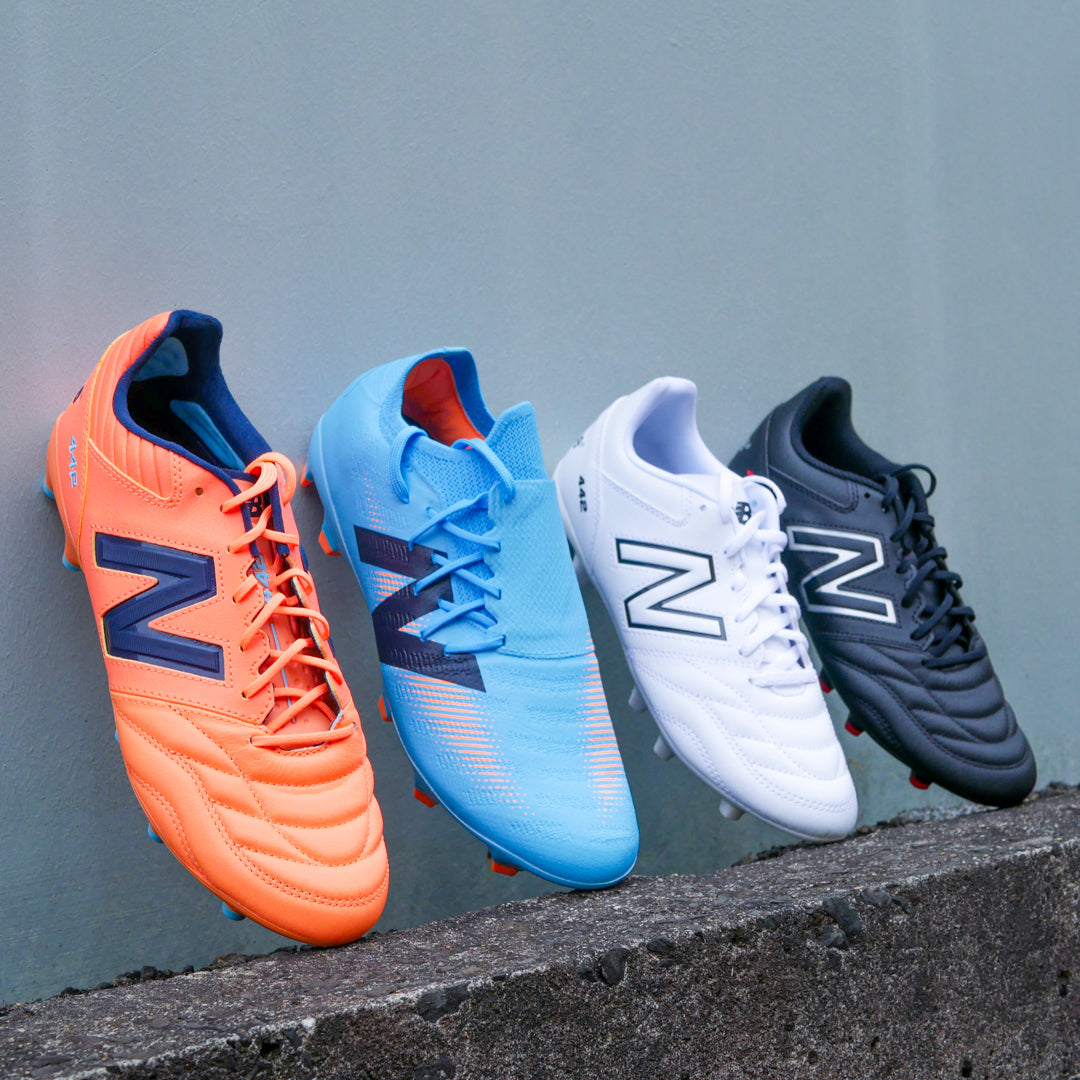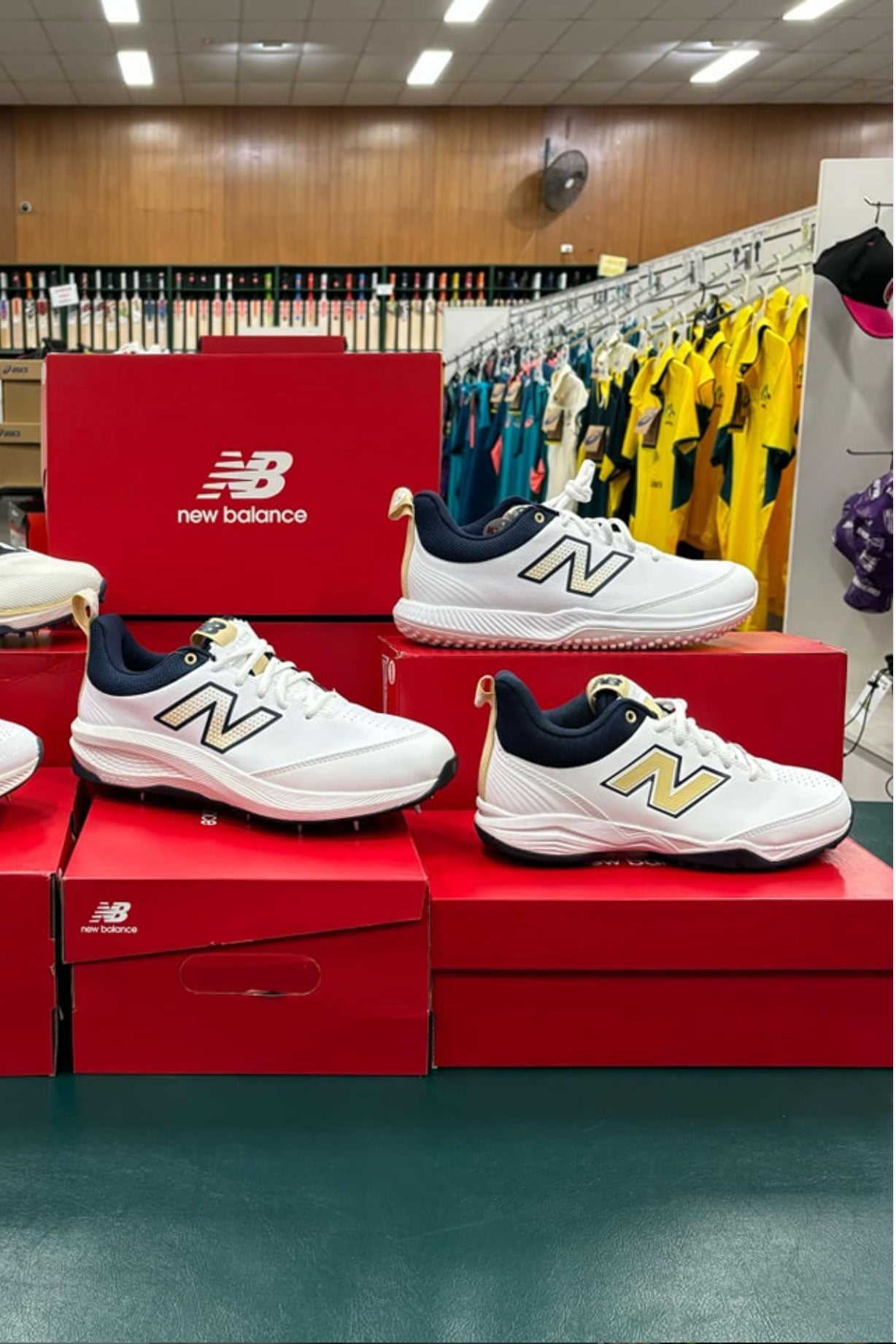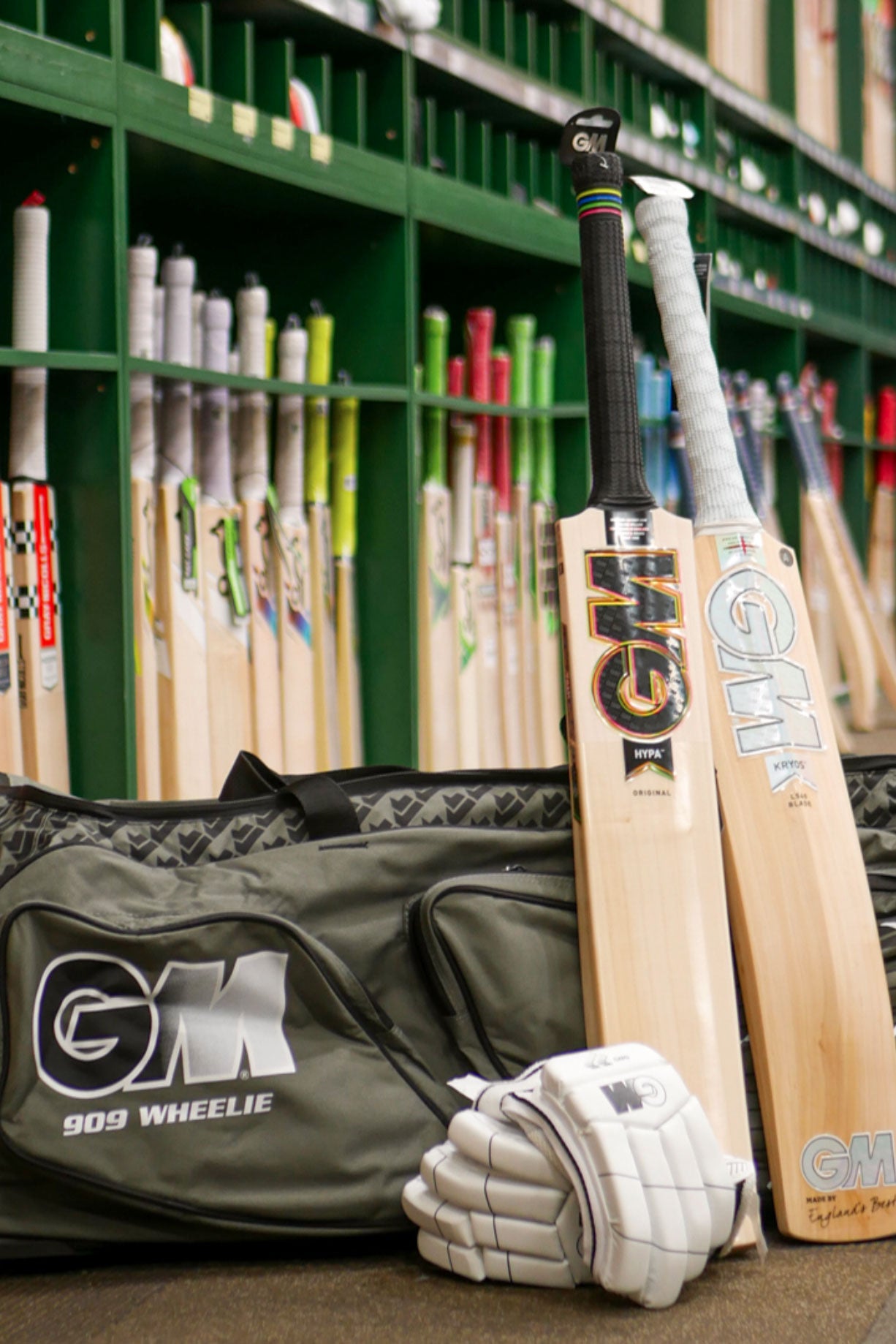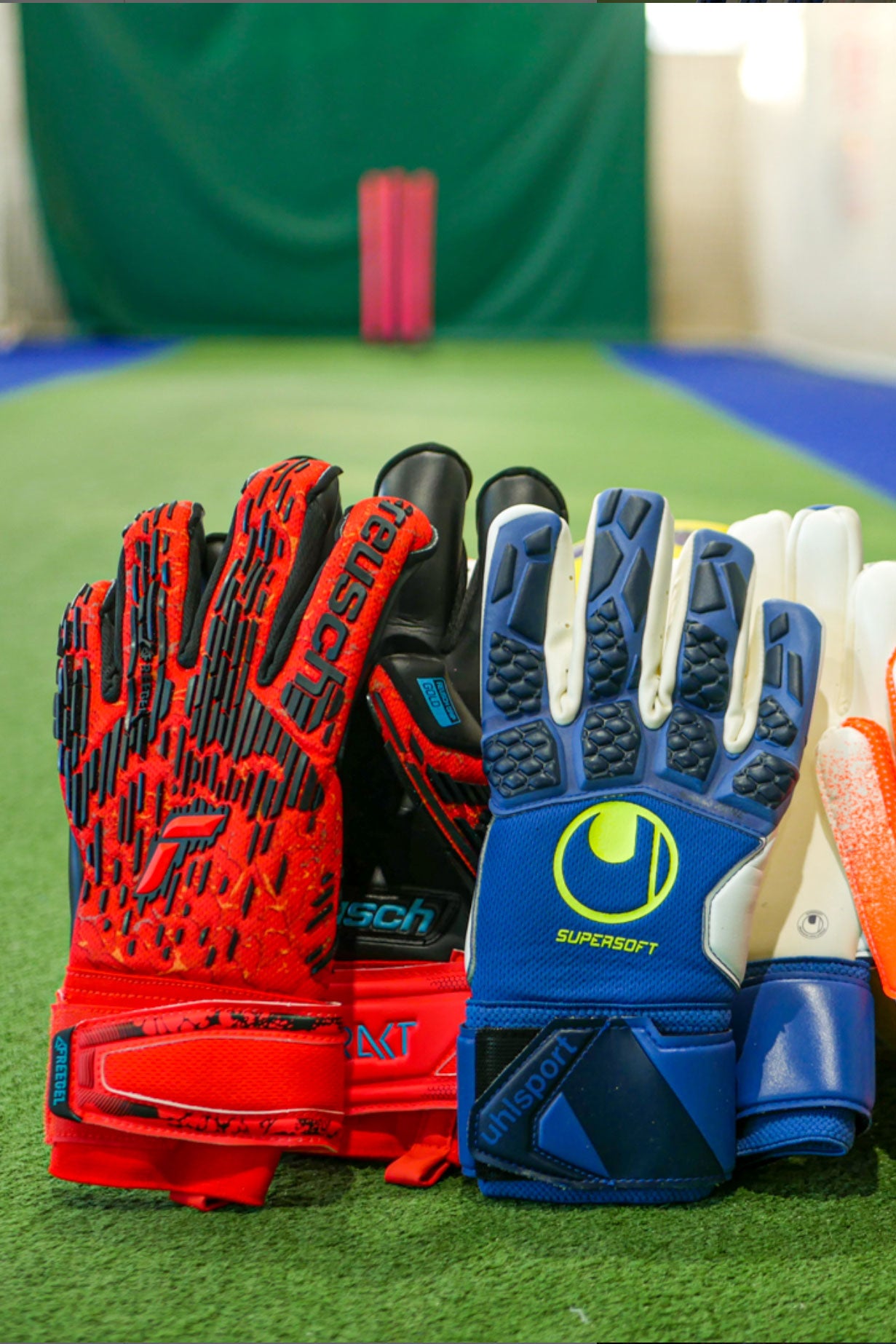Free knocking-in on all cricket bats
BUY NOW, PAY LATER WITH AFTERPAY
Free knocking-in on all cricket bats
BUY NOW, PAY LATER WITH AFTERPAY
Soccer
brands

Cricket Bat Size Guide
November 09, 2025 9 min read
Choosing the right cricket bat size improves control, comfort, and stroke power; bat size must match the player’s height and age to prevent poor technique and injury. A properly sized bat allows players to maintain balance at the crease, generate power efficiently, and develop correct shot mechanics. Junior players, in particular, benefit from a lighter, shorter bat that encourages proper stance and swing, while adults should select a full-size bat that complements their reach and strength. Using a bat that’s too long or heavy can strain the wrists and shoulders, while one that’s too small limits shot range and power. Always refer to a cricket bat size chart and, if possible, test the bat in hand before purchase to ensure the perfect fit for both comfort and performance.
Cricket Bat Size Chart by Age and Height (Quick Reference)
Choosing the right bat size ensures better control, technique, and comfort. While age can be a helpful guide, height should always be the main factor. Most adult players use a Short Handle (SH) bat, while juniors should match their size to height for proper swing balance.
| Bat Size | Player Height | Approx. Age | Notes |
|---|---|---|---|
| 0 | Under 4' (under 122 cm) | 4 & under | Smallest size for beginners. |
| 1 | 4'–4'3" (122–130 cm) | 4–5 yrs | Lightweight for easy handling. |
| 2 | 4'3"–4'6" (130–137 cm) | 6–7 yrs | Ideal for developing coordination. |
| 3 | 4'6"–4'9" (137–145 cm) | 8–9 yrs | Common for younger juniors. |
| 4 | 4'9"–4'11" (145–150 cm) | 9–10 yrs | Typical transition point before Size 5. |
| 5 | 4'11"–5'2" (150–157 cm) | 10–11 yrs | Suitable for confident juniors. |
| 6 | 5'2"–5'5" (157–165 cm) | 12–13 yrs | Pre-Harrow stage for growing players. |
| Harrow | 5'5"–5'8" (165–173 cm) | 13–15 yrs | Ideal for older juniors before adult bats. |
| Short Handle (SH) | 5'8"–6'2" (173–188 cm) | 15+ yrs | Standard adult size. |
| Long Handle (LH) | Over 6'2" (over 188 cm) | Adult | Suits taller players seeking extended reach. |
Junior Bat Sizes – 0 to 6
For developing cricketers, bat size should prioritise comfort and control over power. Junior players often move through sizes every 1–2 seasons as they grow.
-
Size 4 (9–10 yrs, 4'9"–4'11") is a common transition before moving to Size 5.
-
Ensure juniors can swing the bat comfortably without the toe dragging on the ground.
-
Lighter pickup improves batting technique and timing.
Browse our range of junior cricket bats to see the options we have in stock!
Harrow Size – Pre-Adult Transition
Harrow bats are designed for teenagers typically aged 13–15 years and around 5'5"–5'8" tall.They offer a crucial bridge between junior and adult bats, lighter than a Short Handle but with a near-full-length blade, making them ideal for players transitioning to adult cricket
Adult Sizes – Short Handle (SH) vs Long Blade (LB)
For adult players, cricket bats are typically available in two main sizes: Short Handle (SH) and Long Blade (LB). The Short Handle is the standard adult size and suits most players under 6'2" (188 cm). It offers a balanced feel, ideal control, and comfortable handling for both front- and back-foot play.
The Long Blade bat is designed for taller players (6'2" and above) or those who prefer a slightly extended reach. It features a longer blade length and standard length handle, maintaining overall balance while accommodating longer arms and wider stances.
Choosing between SH and LH ultimately comes down to height, comfort, and personal preference—players should always ensure the bat allows them to maintain a natural stance and smooth swing without overreaching or losing control.
How to Choose the Right Bat Size for Your Body Type and Style
Choosing the right cricket bat involves more than just age or height — it’s about finding the right match for your body type, strength, playing level, and grip preference. A correctly sized and weighted bat enhances control, comfort, and shot power while preventing poor technique or strain. Consider how the bat feels in your hands, whether it complements your stance and stroke play, and how long you can swing it comfortably during extended sessions.

Bat Size for Height and Reach
A bat’s length should align with your height and natural reach, ensuring you can comfortably address the ball and maintain a proper stance. A bat that’s too long forces players into an awkward posture, restricting movement and making it harder to get under the ball. Conversely, a bat that’s too short can lead to overreaching and poor timing. The ideal bat allows you to rest the toe flat on the ground while holding the handle comfortably at waist height — giving you balance and full control over your shots.
Bat Size for Weight and Strength
The weight of the bat plays a major role in swing speed, shot control, and endurance. Lighter bats suit players who rely on timing, wrist play, and quick reactions, allowing for faster bat speed and longer sessions without fatigue. Heavier bats offer more power and momentum through the ball but require greater upper-body strength to handle comfortably. Choose a bat weight that feels balanced — one that you can lift and swing freely without strain — ensuring consistent performance throughout long innings.
Bat Size Based on Playing Style
Your playing style should also influence your bat choice. Defensive or stroke players, who focus on timing and placement, often prefer bats with a lighter pickup, allowing for greater control and quicker movement. Aggressive players may opt for a slightly heavier or larger bat, which provides added power for strong drives and attacking shots. Even within the same nominal size, subtle differences in balance, handle thickness, and overall pickup can make a bat feel completely different — so it’s important to test several options to find one that suits your natural rhythm and approach.
Short Handle vs Short Blade vs Long Blade – Key Differences
When selecting an adult bat, understanding the difference between Short Handle (SH), Short Blade (SB) , and Long Blade (LB) models is essential. Each design affects how the bat feels, swings, and performs. In short: SH offers faster control, SB suits shorter players, and LB adds reach but may slightly reduce pickup speed. The right choice depends on your height, playing comfort, and preferred balance between control and power.
Short Handle (SH)
The Short Handle cricket bat is the standard adult bat size and is ideal for players under 6’2” (188 cm). It provides excellent control, balance, and maneuverability, making it the most common choice among both professional and amateur players. The shorter handle allows for a compact grip and quicker bat speed, ideal for players who value precision and fast reaction times.
Short Blade (SB)
A Short Blade bat is designed for the slighter shorter adult player. This size is increasingly used by elite Players like Marnus Labuschagne and Alyssa Healy.This size allows batters to maintain a nice overall weight in their bats while allowing the profile of the bat to be maximised with as much willow as possible. Usually the length of the blade is reduced by 10mm, and has a standard length bat handle.
Long Blade (LB)
The Long Blade cricket bat offers a longer blade and standard handle, providing extra reach for taller players. The extended blade length makes it easier for taller batters to reach lower bouncing deliveries and generally stand more upright in their batting stance.
Cricket Bat Size vs Weight – Finding the Right Balance
While bat size and weight are often discussed together, they’re actually separate variables that affect performance differently. Two bats of the same size can feel completely different depending on willow density, profile shape, and balance point. A bat may be shorter but heavier if it has a thicker profile or denser willow, or longer but lighter if crafted from low-density wood. The key is to find the perfect balance — a bat that matches your physical strength, playing style, and comfort level, allowing you to swing freely without losing control or power.

Lightweight Bats for Younger or Wristy Players
Lightweight bats are ideal for younger players, technical batters, or those who rely on wrist work and quick shot execution. The reduced weight allows for faster swing speed, easier handling, and better reaction time against fast bowlers. They also help minimise fatigue during long innings or training sessions, allowing players to maintain consistent shot control. These bats encourage proper technique and are especially useful for players developing their timing and precision.
Heavier Bats for Power Hitters
Heavier bats suit stronger, aggressive players who like to dominate bowlers with powerful strokes. The additional mass behind the ball generates greater momentum and impact, resulting in longer boundaries and more forceful drives. However, heavier bats require strength, good timing, and sound technique to handle effectively. If the bat feels cumbersome or slows your swing, it can reduce control and consistency — so it’s crucial to find a weight that delivers power without sacrificing comfort or shot accuracy.
Common Mistakes When Choosing a Cricket Bat Size
Even experienced players can make sizing mistakes that affect comfort, control, and technique. When selecting a bat, it’s important to consider your body type, playing style, and strength rather than just appearance or brand. Here are some of the most common errors to avoid:
-
Choosing a bat that’s too big for kids: Many young players use oversized bats, which forces poor technique and makes proper shots difficult. A correctly sized junior bat should allow easy pickup and balanced control.
-
Ignoring balance and pickup: Two bats of the same weight can feel very different depending on balance. Always test how the bat feels in your hands — it should lift naturally and allow smooth swing movement.
-
Copying professional setups: Pros often use custom bats built for their strength, height, and playing style. Copying their setup without considering your own physical attributes can lead to strain or inconsistent timing.
-
Focusing only on appearance or branding: The right bat isn’t about looks or labels — it’s about how comfortably it fits and performs for you.
-
Overlooking grip comfort: A handle that’s too thick or thin can affect control and shot accuracy. Try different grips to find what feels most natural.
Avoiding these mistakes ensures you choose a bat that’s balanced, comfortable, and tailored to your body, helping you play confidently and develop proper technique.
Recommended Bats by Size and Age – With Brand Examples
Choosing the right bat can be easier when you know which trusted models suit each age group and size range. Leading brands such as Gray-Nicolls, Kookaburra, SS, MRF, and Gunn & Moore (GM) offer high-quality options tailored to different stages of a player’s development — from juniors just starting out to tall, experienced adults looking for custom setups. The guide below highlights reliable choices across the most common bat sizes.

Junior Bat Examples (Sizes 0–6)
For young players learning correct technique and developing confidence at the crease, lightweight junior bats are key. Popular and durable options include:
Harrow and SH Models
For players transitioning from junior to adult cricket, Harrow and Short Handle (SH) sizes are the most common next step. They provide a slightly longer blade and handle, perfect for teenagers or smaller adults. Recommended options include:
Long Blade & Custom Options
For taller adults (over 6’2”) or players seeking personalised specifications, Long Blade (LB) or custom-made bats are the way to go. Reputable options include:.
Final Tips for Buying the Right Cricket Bat Size
When it comes to choosing the perfect cricket bat, remember that fit and feel matter more than looks or branding. Always match the bat size to the player’s height and strength — an oversized or overly heavy bat can harm technique and control, especially for juniors. If possible, test the pickup and balance in-store to see how naturally the bat swings and sits in your hands. A well-fitted bat should feel comfortable at address, allowing a smooth, effortless swing without strain.
If you’re buying online, double-check the manufacturer’s size chart (brands like Gray-Nicolls, Kookaburra, GM, SS, and MRF each have clear sizing guides) to ensure the right length and weight for your body type. Finally, stick to trusted, reputable brands known for consistency and quality — they’ll not only perform better but also last longer with proper care. The right size, weight, and feel make all the difference between a good bat and one that truly enhances your game.
FAQs About Cricket Bat Sizes
What is the most popular adult bat size?
The Short Handle (SH) is the most popular adult bat size, suitable for players up to around 6’2” (188 cm) tall. It offers the ideal balance between control, power, and comfort, making it the standard choice for the majority of adult cricketers.
Can a child use an adult-size bat?
Generally, no — children should use a junior bat appropriate for their height and strength. Adult-size bats are heavier and longer, which can cause poor technique, slower reaction times, and even strain or injury. As a rule, a child should be able to comfortably rest the bat’s toe on the ground while holding the handle near waist height.
Is Harrow size good enough for adults?
A Harrow bat is designed for teenagers and smaller adults (typically under 5’6” / 168 cm). It’s a great transitional size between junior and adult bats. While it can work for some adults, taller or stronger players will find better comfort and reach with a Short Handle (SH) or Long Blade (LB) bat.
How do I measure myself for a cricket bat?
A good way for Juniors up until the age of about 12-13 is to stand upright in your cricket shoes and hold a bat by your side with the toe resting flat on the ground. The top of the handle should reach roughly to your waist or hip bone. For adults and also juniors, you can also refer to brand-specific size charts (like those from Gray-Nicolls, Kookaburra, GM, SS, or MRF) which match bat sizes to height ranges — ensuring the perfect fit for both comfort and performance.
Subscribe
Sign up to get the latest on sales, new releases and more …





